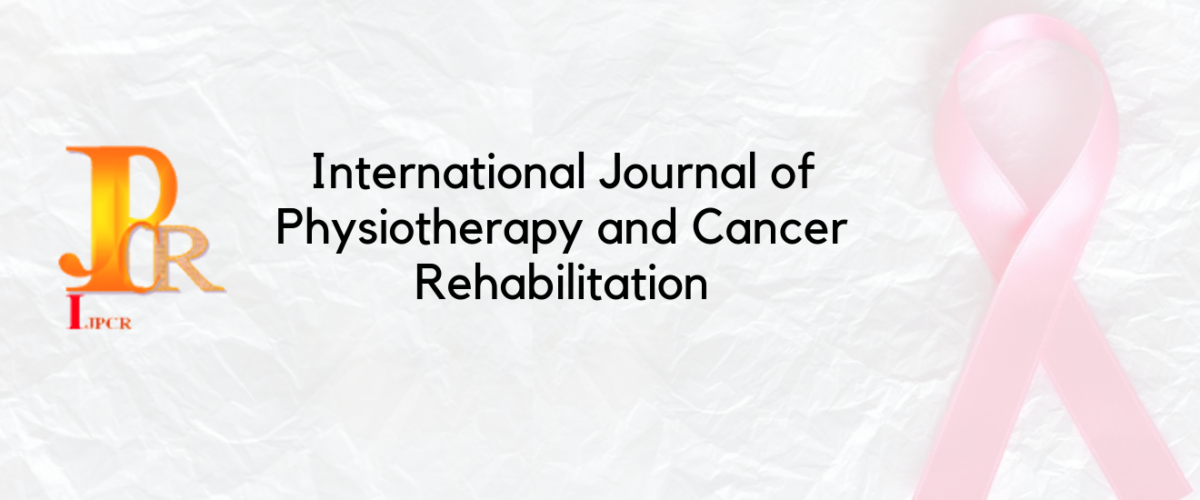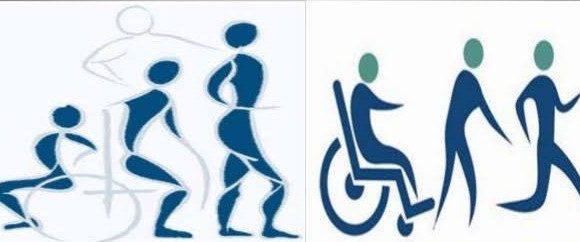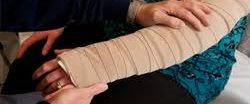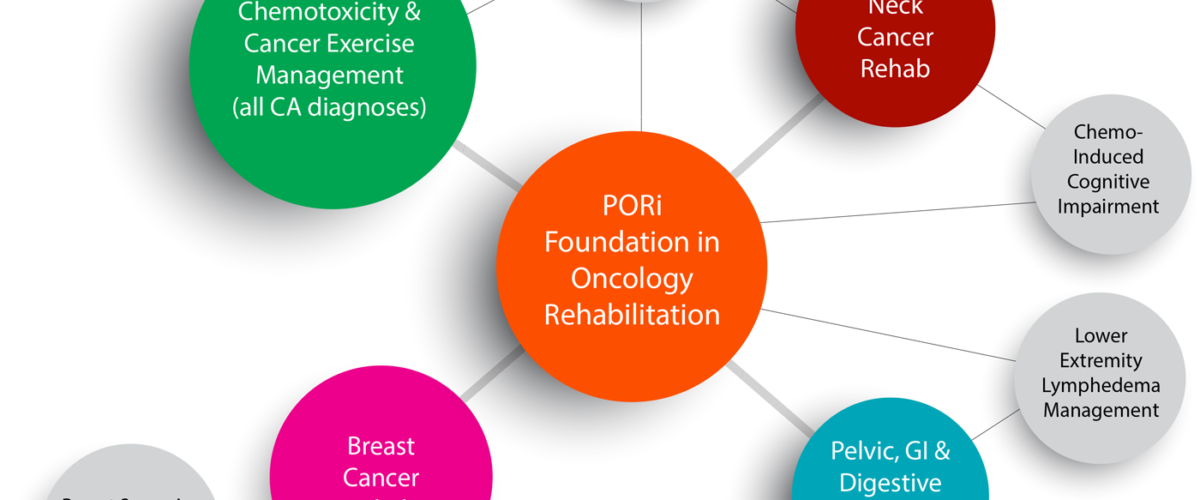EXERCISE REHABILITATION IN BREAST CANCER-Dr. Smriti Neha
EXERCISE REHABILITATION IN BREAST CANCER
Dr. Smriti Neha
Breast cancer is the most common cancer in women worldwide, and the probability of an arbitrary woman being diagnosed with breast cancer during her lifetime is about 10-13%. (1); among these women, 38% were diagnosed more than 10 years ago.
Because of its high incidence and relatively good prognosis, breast cancer is the most prevalent cancer among women in the world. However, breast cancer is still the leading cause of cancer-related death among women in many developed countries, and is the most common cause of death of women aged 40–60 years (1). Breast cancer mortality rates have declined, possibly due to earlier detection, improvements in surgical resection, radiation, and systemic therapies (2). Thus, as more patients survive breast cancer, the number of women living with long-term side effects also increases (2).
CLINICAL PRACTICE
Today, three screening tests are routinely in use for detection of breast cancer: mammography, physical breast exam, and breast self-exam. When a breast tumor is detected, a more detailed examination can be done (mammogram and/or ultrasound and/or MRI (Magnetic Resonance Imaging). The final diagnosis is performed by microscopic examination of fineneedle aspirations (cytology) or a biopsy (histology) (3). Even though the routines related to breast cancer diagnosis are efficient, patients may have to wait several weeks before
treatment. This delay waiting period may impose additional psychological challenges for the woman.
Treatment options of breast cancer patients and morbidities. Breast cancer treatment involves multiple medical disciplines. The treatment depends on the patients age, menopausal status as well as disease stage and pathological features; type, tumor grade, multifocal receptor status, and family predisposition (3). Disease stage is determined by tumor size, the number and location of lymph nodes involved, and the presence or absence of distant metastatic disease. The treatment consists of local treatments such as surgery and radiotherapy, systemic treatment such as chemo and hormone therapy, and monoclonal antibodies (4;5).
Surgery Surgical procedures have been modified during the last decades (6). With radical mastectomy (Halsteds method), major side effects occurred (extensive and frequent arm and shoulder morbidities). It was therefore replaced by modified radical mastectomy in the 1970-80’s. Postsurgical side effects were reduced without increase in local relapses or decreased survival rates. Breast conserving treatment was then developed. Randomized studies showed that only removing the tumour (lumpectomy) and a rim of normal surrounding breast tissue were as safe as modified radical treatment, if the patient was treated with postoperative radiotherapy to the whole breast (7;8). Axillary lymph node dissection (ALND) is now done in less than 50 % of the patients due to sentinel lymph node biopsy (SLNB) (9;10). The status of the axilla is one of the most important prognostic factors in breast cancer. Subsequent decisions on supplementary treatment depend on how much lymph nodes are affected as well as other patient and tumour characteristics. Mastectomy is still recommended for patients with large tumours and for patients when irradiation is contraindicated. Other factors may need to be taken into account as well when consider mastectomy (e.g. genetic factors and high risk of relapse) (3). For these patients, breast reconstruction can be performed concomitantly with mastectomy or at a later time.
Systemic (neo) adjuvant treatment Systemic therapy is indicated for patients with high and intermediate risk of cancer recurrence. In most cases systemic treatment is given shortly after surgery (adjuvant), e.g. endocrine- and/or chemotherapy; some patients also receive monoclonal antibody therapy, e.g. trastuzumab (Herceptin). In some cases, chemotherapy is given before surgery (neoadjuvant) to try to shrink the tumour (down-stage) to make surgical removal possible. The type of chemotherapy or monoclonal antibody treatment is selected based on the type, size, and grade of the tumour and the molecular characteristics and involvement of lymph nodes in the axilla. Other combinations of chemotherapies can be given depending on
tumour characteristics. Endocrine therapy is only given to patients after histologically proven estrogen (ER) and/or progesterone (PgR) receptors(3,11).
Side effects of regular treatment Several health problems/side effects may develop following breast cancer diagnosis and treatment (presented in Table 1). Side effects can follow surgery, either ALND or SLNB, but are less common and often less severe following SLNB (9). Common side effects are temporary or permanent numbness of the skin on the inside of the upper arm, temporary or long-term limitation of arm and shoulder movements, and swelling of the breast and arm called lymphedema. Lymphedema is the most sig-nificant of these side effects and may develop into a permanent health problem. Significant lymphedema is reported in 10-50 % of women who have had axillary lymph node dissection and approximately 5-20 % of women who have had sentinel lymph node biopsy. Lymphedema may result in cosmetic deformity, loss of functionality, physical discomfort, recurrent episodes of erysipelas, and psychological distress. Pain is reported by 12 – 51% of patients 1 year after treatment (12), most frequently due to nerve injuries during surgery; the treatment is often pharmacological. Early side effects due to radiation can include irritation, rubor in the skin during radiation treatment, and tiredness resulting in reduced physical activity. The majority of skin reactions disappear a few weeks after treatment is completed. Late side effects can include slightly darker skin in the treated area and continued sensitivity to sun exposure. Later development of teleangectasis, skin- and lung fibrosis may occur. If the axilla has been irradiated, there is an increased risk of reduced mobility of the shoulder, lymhedema, especially after ALND and when several lymph nodes have been affected (13). Pulmonary sequela as radiation pneumonitis (incidence 2-29%) is rarely of clinical consequence.
Side effects of chemotherapy shows individual variation and is also depending on the type of drug used (14). Common acute side effects are: alopecia (hair loss), nausea, fatigue, increased risk of weight gain, increased risk of infection, and temporary effects on bone marrow with lower blood counts, especially white blood cells (leucocytes).
The most common side effect of endocrine therapy is weight gain, symptoms of menopause, hot flashes, and vaginal dryness.. Some drugs may cause an increased risk of osteoporosis and bone fractures (15).
Cardiac toxicity is a concern in breast cancer survivors (14). There is known for a long time that anthracyclines cause acute and chronic cardiotoxicity. However, the cardiotoxic effects of radiation therapy, hormonal therapy (including tamoxifen and the aromatase inhibitors), and chemotherapy with taxanes and trastuzumab treatment have emerged more recently (3;11;14). A single breast cancer patient may receive anthracyclines, trastuzumab and radiotherapy before commencing hormonal therapy (14). One major consequence of breast cancer and associated treatments is weight gain. Physical inactivity has also been observed as a consequence of various breast cancer treatment modalities (2). There is some studies that show an association between weight gain and increased breast cancer recurrence and mortality (16;17).
Common long term side effects and consequences after breast cancer are listed in table 1.
Table 1. Long term side effects and consequences after breast cancer treatment Problem type Side effects related to the disease Side effects related to treatments Type of treatment Fatigue Depression X x Chemotherapy Endocrine therapy Irradiation Lymphedema X x Surgery Irradiation Shoulder movement impairments X x Surgery, Axillary dissection Irradiation Weight gain x Chemotherapy Endocrine therapy Hormone therapy Cardio-respiratory x Chemotherapy Irradiation Monoclonal antibodies Skeletal Bone marrow Osteoporosis x Chemotherapy Endocrine therapy (Aromatase Inhibitors) Pain x x Surgery Chemotherapy Slightly increased risk of thrombosis (blood clot) x Chemotherapy Endocrine therapy
REHABILITATION OF BREAST CANCER PATIENTS
Rehabilitation is a process in which different caregivers use a combination of their specific treatment modalities. In the following paragraphs we will therefore describe the most common modalities.
Physiotherapy Physiotherapy for breast cancer patients is based on the same principles as for other patient groups, although they have some special problems related to their cancer and its treatment. Physiotherapy uses both passive and active stimuli in prevention, treatment and rehabilitation. It involves careful examination of the musculoskeletal system and the application of knowledge, stimuli, and skills.
Impaired shoulder function and development of arm lymphedema, i.e. an arm volume difference between the arms of >150 ml or circumferential arm difference of >2 cm, are common side effect of treatment for early breast cancer. Therefore, complications following cancer treatment, such as lymphedema, scar adherence, pulmonary complications, range of motion, and muscle strength, are of major importance. Water displacement, circumference measurement, and tissue tonometry are important methods used to evaluate the status of lymphedemous limbs. Goniometers and dynanometers are used to measure the range of motion and muscular force/endurance, respectively. The American College of Sports Medicine (ACSM) roundtable on exercise guidelines for cancer survivors describes that exercise during and after cancer treatment is safe and can help patients improve their physical capacity and quality of life (18). The ACSM guidelines indicate specific exercise programs oriented towards impairments associated with disease and medical treatment (18). Strength exercise does not have any negative effects on an existing SL (19); instead, it has beneficial effects such as improvement of strength (20) and lower exacerbation rates (21). However, these recommendations do not include any information about the prevention of SL in breast cancer patients.
They showed that exercise in the form of progressive resistance training as well as combined exercise therapies consisting of physiotherapy, physical therapy, MLD, stretching, massage, and/or kinesiotherapy are safe and might have a preventive effect.
In the past, physicians believed that cancer patients must avoid exercise (18), and literature indicating that exercise can cause or exacerbate lymphedema still exists (22). However, the present review revealed that 5 out of 8 trials reported significant preventive effects of resistance training and exercise on SL incidence. Park et al. (23) investigated the incidence and risk factors of SL(secondary lymphedema) in breast cancer patients. They demonstrated that women who exercised regularly, performed preventive self-care, and received information about the possible appearance of a lymphedema before local treatment had a lower risk of developing lymphedema. Proposed mechanisms included that exercise promotes the contractility of the skeletal muscles and subsequently provides primary pump mechanisms for lymph and venous drainage (24,25).
Besides radiation and the number of surgically removed lymph nodes (30), overweight also contributes crucially to the development of SL (26–28). In the study by Sagen et al. (29), a significant risk increase was observed in patients with a body mass index of >25 kg/m2 (p = 0.005). Shaw et al. (31) also referred to the relationship between overweight/obesity and the development of lymphedema (32). According to Bicego et al. (24), further risk factors include obstruction, trauma, and inflammation (33). Physical inactivity results in a decrease in lymph circulation. Physical exercise maintaining or improving the ‘range of motion’ of the shoulder therefore seems to be an effective and preventive measure. Additional benefits include improved muscle strength/fitness and maintenance of body weight. Further, Ahmed et al. (22) recommend that breast cancer patients should perform strength training of the upper body because this does not promote the risk or symptoms of lymphedema. Besides, Sagen et al. (29) recommend that patients with axillary lymph node dissection continue to
exercise without restriction in daily living. In addition, considering early exercise intervention in women with breast cancer is important and necessary (34). The studies by Ahmed et al. (22) and Schmitz et al. (40) show that progressive strength training can generate a preventive effect. Combined exercise therapy can result in similar effects (35-37). Exercise additionally supports muscular pump function and should be performed at a moderate level of intensity and with a small number of repetitions. The application of MLD seems to have prophylactic effects only in combination with exercise, and current data does not show any evidence for MLD as a single primary prophylactic method (38). To guarantee the safe and effective performance of the exercises, the support of a certified exercise therapist during the first months of the exercise training is also advised
(39).
REFERENCES
1. Cancer Registry of Norway. Cancer in Norway 2007 – Cancer inci-dence, mortality, survival and prevalence in Norway. Oslo: Cancer Registry of Norway; 2008.
2. World Cancer Research Fund AIfCR. Food, nutrition, physical activ-ity, and the prevention of cancer. A global perspective. Washington (DC): American Institute for Cancer Research (AICR) 2007.
3. Sosial og Helsedirektoratet. Nasjonalt handlingsprogram med ret-ningslinjer for diagnostikk, behandling og oppfølging av pasienter med brystkreft. Nasjonale faglige retningslinger. 2007.
4. Norsk bryst cancer gruppe (NBCG).
5. Moulder S, Hortobagyi GN. Advances in the treatment of breast can-cer. Clin Pharmacol Ther 2008;83(1):26-36.
6. Harris JR, Lippman ME, Veronesi U, Willett W. Breast cancer (1). N Engl J Med 1992;327(5):319-28.
7. Fisher B, Anderson S, Bryant J, Margolese RG, Deutsch M, Fisher ER, et al. Twenty-year follow-up of a randomized trial comparing total mastec-tomy, lumpectomy, and lumpectomy plus irradiation for the treatment of in-vasive breast cancer. N Engl J Med 2002;347(16):1233-41.
8. Veronesi U, Cascinelli N, Mariani L, Greco M, Saccozzi R, Luini A, et al. Twenty-year followup of a randomized study comparing breast-conserving surgery with radical mastectomy for early breast cancer. N Engl J Med 2002;347(16):1227-32.
9. Kim T, Giuliano AE, Lyman GH. Lymphatic mapping and sentinel lymph node biopsy in early-stage breast carcinoma: a metaanalysis. Cancer 2006;106(1):4-16.
10. Schlichting E, Harr ME, Sauer T, Babovic A, Karesen R. [Sentinel lymph node biopsy in breast cancer]. Tidsskr Nor Laegeforen 2006;126(16):2098-100.
11. Johansen K, Lønning P, Naume B, Norderhaug I, Norum J, Jan Abel J, et al. Ny medikamentell behandling av brystkreft. Adjuvant behandling med trastuzumab ved tidlig stadium av brystkreft. Rapport fra Kunnskaps-senteret 2006;Rapport nr 02 2006
12. Rietman JS, Dijkstra PU, Hoekstra HJ, Eisma WH, Szabo BG, Groothoff JW, et al. Late morbidity after treatment of breast cancer in rela-tion to daily activities and quality of life: a systematic review. Eur J Surg On-col 2003;29(3):229-38.
13. Lee TS, Kilbreath SL, Refshauge KM, Herbert RD, Beith JM. Progno-sis of the upper limb following surgery and radiation for breast cancer. Breast Cancer Res Treat 2008;110(1):19-37.
14. Bird BR, Swain SM. Cardiac toxicity in breast cancer survivors: re-view of potential cardiac problems. Clin Cancer Res 2008;14(1):14-24.
15. Howell A. The ‘Arimidex’, Tamoxifen, Alone or in Combination (ATAC) Trial: a step forward in the treatment of early breast cancer. Rev Re-cent Clin Trials 2006;1(3):207-15.
16. Goodwin PJ, Esplen MJ, Winocur J, et al. Development of a weight management program in women with newly diagnosed locoregional breast cancer. I: Bitzer J, Stauber M, editors. Psychosomatic Obstretics and Gyne-cology.Bologna, Italy: Monduzzi Editore International Proceedings Divi-sions; 1995. p. 491-6.
17. Reeves GK, Pirie K, Beral V, Green J, Spencer E, Bull D. Cancer inci-dence and mortality in relation to body mass index in the Million Women Study: cohort study. BMJ 2007;335(7630):1134.
18. Schmitz KH, Courneya KS, Matthews C, Demark-Wahnefried W, Galvao DA, Pinto BM, Irwin ML,Wolin KY, Segal RJ, Lucia A, Schneider CM, von GruenigenVE, Schwartz AL; American College of SportsMedicine: American College of Sports Medicineroundtable on exercise guidelines for cancer survivors.Med Sci Sports Exerc. 2010; 42: 1409–1426.
19. Keilani M, Hasenoehrl T, Neubauer M, Crevenna R:Resistance exercise and secondary lymphedema inbreast cancer survivors – a systematic review. SupportCare Cancer 2016; 24: 1907–1916.
20. Nelson NL: Breast cancer-related lymphedema and resistanceexercise: a systematic review. J Strength Cond Res 2016; 30: 2656–2665
21. Schmitz KH, Ahmed RL, Troxel A, Cheville A, SmithR, Lewis-Grant L, Bryan CJ, Williams-Smith CT,Greene QP: Weight lifting in women with breast-cancer-related lymphedema. N Engl J Med 2009; 361: 664–673.
22. Ahmed RL, Thomas W, Yee D, Schmitz KH: Randomized controlled trial of weight training and lymphedema in breast cancer survivors. J Clin Oncol 2006; 24: 2765–2772
23. Park JH, Lee WH, Chung HS: Incidence and risk factors of breast cancer lymphoedema. J Clin Nurs 2008;17: 1450–1459.
24. Bicego D, Brown C, Ruddick M, Storey D, Wong C,Harris SR: Exercise for women with or at risk for breast cancer-related lymphedema. Phys Ther 2006; 86:1398–1405.
25. Witte CL, Witte MH: Contrasting patterns of lymphatic and blood circulatory disorders. Lymphology 1987; 20: 171–178.
26. Erickson VS, Pearson ML, Ganz PA, Adams J, Kahn KL: Arm edema in breast cancer patients. J Natl Cancer Inst 2001; 93: 96–111.
27. Hayes SB, Freedman GM, Li T, Anderson PR, Ross E:Does axillary boost increase lymphedema compared with supraclavicular radiation alone after breast conservation? Int J Radiat Oncol Biol Phys 2008; 72: 1449–1455.
28. Paskett ED, Naughton MJ, McCoy TP, Case LD, Abbott JM: The epidemiology of arm and hand swelling in premenopausal breast cancer survivors. Cancer Epidemiol Biomarkers Prev 2007; 16: 775– 782.
29. Sagen A, Karesen R, Risberg MA: Physical activity for the affected limb and arm lymphedema after breast cancer surgery. A prospective, randomized controlled trial with two years follow-up. Acta Oncol 2009; 48:1102–1110.
30. Devoogdt N, Christiaens MR, Geraerts I, Truijen S,Smeets A, Leunen K, Neven P, Van Kampen M: Effectof manual lymph drainage in addition to guidelinesand exercise therapy on arm lymphoedema related tobreast cancer: randomised controlled trial. BMJ 2011; 343:d5326.
31. Shaw C, Mortimer P, Judd PA: A randomized controlled trail of weight reduction as a treatment for breast cancer-related lymphedema. Cancer 2007; 110:1868–1874.
32. Ochalek K: Prevention of lymphoedema. Wspolczesna Onkol 2011; 15: 354–356.
33. Hull MM: Lymphedema in women treated for breast cancer. Semin Oncol Nurs 2000; 16: 226–237.
34. Cavanaugh KM: Effects of early exercise on the development of lymphedema in patients with breast cancer treated with axillary lymph node dissection. J Oncol Pract 2011; 7: 89–93.
35. Torres Lacomba M, Yuste Sanchez MJ, Zapico Goni A,Prieto Merino D, Mayoral del Moral O, Cerezo Tellez E, Minayo Mogollon E: Effectiveness of early physiotherapy to prevent lymphoedema after surgery for breast cancer: randomised, single blinded, clinical trial.BMJ 2010; 340:b5396
36. Zimmermann A, Wozniewski M, Szklarska A, Lipoxicz A, Szuba A: Efficacy of manual lymphatic drainage in preventing secondary lymphedema after breast cancer surgery. Lymphology 2012; 45: 103–112.
37. Zhang L, Fan A, Yan J, He Y, Zhang H, Zhang H,Zhong Q, Liu F, Luo Q, Zhang L, Tang H, Xin M:Combining manual lymph drainage with physical exercise after modified radical mastectomy effectively prevents upper limb lymphedema. Lymphat Res Biol 2016; 4: 104–108.
38. Stuiver MM, ten Tusscher MR, Agasi-Idenburg CS,Lucas C, Aaronson NK, Bossuyt PM: Conservative interventions for preventing clinically detectable upperlimb lymphoedema in patients who are at risk of developing lymphoedema after breast cancer therapy. Cochrane Database Syst Rev 2015;CD009765.
39. Schmitz KH, Ahmed RL, Hannan PJ, Yee D: Safety and efficacy of weight training in recent breast cancer survivorsto alter body composition, insulin, and insulin like growth factor axis proteins. Cancer Epidemiol Biomarkers Prev 2005; 14: 1672–1680.
40. Schmitz KH, Ahmed RL, Troxel AB, Cheville A, Lewis-Grant L, Smith R, Bryan CJ, Williams-Smith T, Chittams J: Weight lifting for women at risk for breast cancer-related lymphedema. JAMA 2010; 304: 2699–2705.











